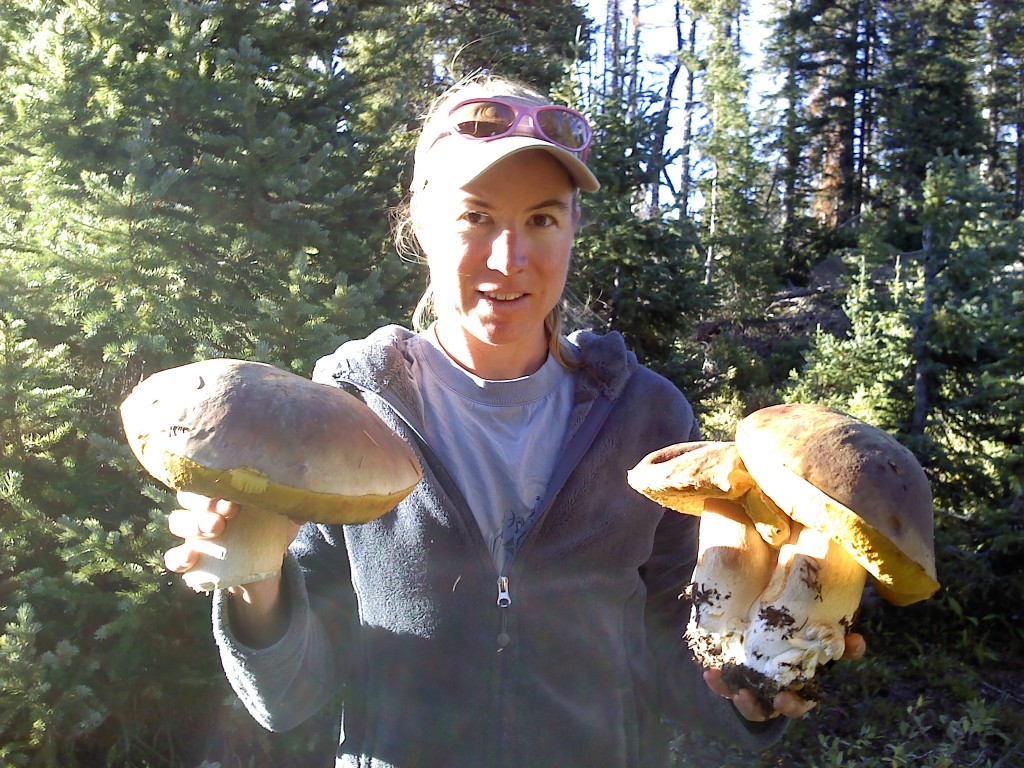
As an undergraduate biology student, I loathed taxonomy. Plant systematics was the only college course I remember absolutely hating. It seemed like nothing more than rote memorization. I studied with flash cards I’d made on little index cards. Bracts instead of sepals, colored glands that take the place of petals? Probably a Euphorbiaceae.
I spent hours memorizing distinctions like these, and I considered this kind of knowledge esoteric and pointless. Why did I need to memorize the latin names of a bunch of plants when I could always look them up? Classifying things seemed archaic. I wanted to ponder biology’s bigger questions.
So I’m surprised to find myself making so much practical use of the lessons I learned in that boring class. I can’t say that I’ve retained many of the details I had to memorize for my final exam. I still have my dog-eared copy of William Webster’s Rocky Mountain Flora, and when I really want to identify a local plant I usually just refer to it.
The thing that I didn’t appreciate at the time I took the course was that I wasn’t just learning to distinguish acers from anacards; I was also learning how to observe the world around me. I didn’t know it yet, but those critical thinking skills would eventually lead me to some very tasty meals.
Which is a long-winded way of saying that I’ve become addicted to mushrooming. (This kind, not that.)
When you go wild mushroom hunting, the practical value of taxonomy becomes immediately obvious. Misidentify your mushroom and you could die. Or become so violently ill that you wish you had died. My mushrooming motto is, “when in doubt, don’t.”
But after a little bit of self-study, a good book, and some careful observing, I’ve found that many of the tastiest mushrooms are also relatively easy to identify.
Identifying a mushroom begins with noticing its habitat. Is it growing in spruce or aspen? Then you note its features. Gills or no gills? Boletes have a hallmark tubes, rather than gills, underneath their caps. Does it have a veil? Does the stalk break clean or does it show fibers when broken? A final determination may require a spore print. You simply place the mushroom on a piece of white paper, cap down, and wait. After an hour or two, enough spores will be released on the paper that you can determine the color of the spores, an important identifying feature.
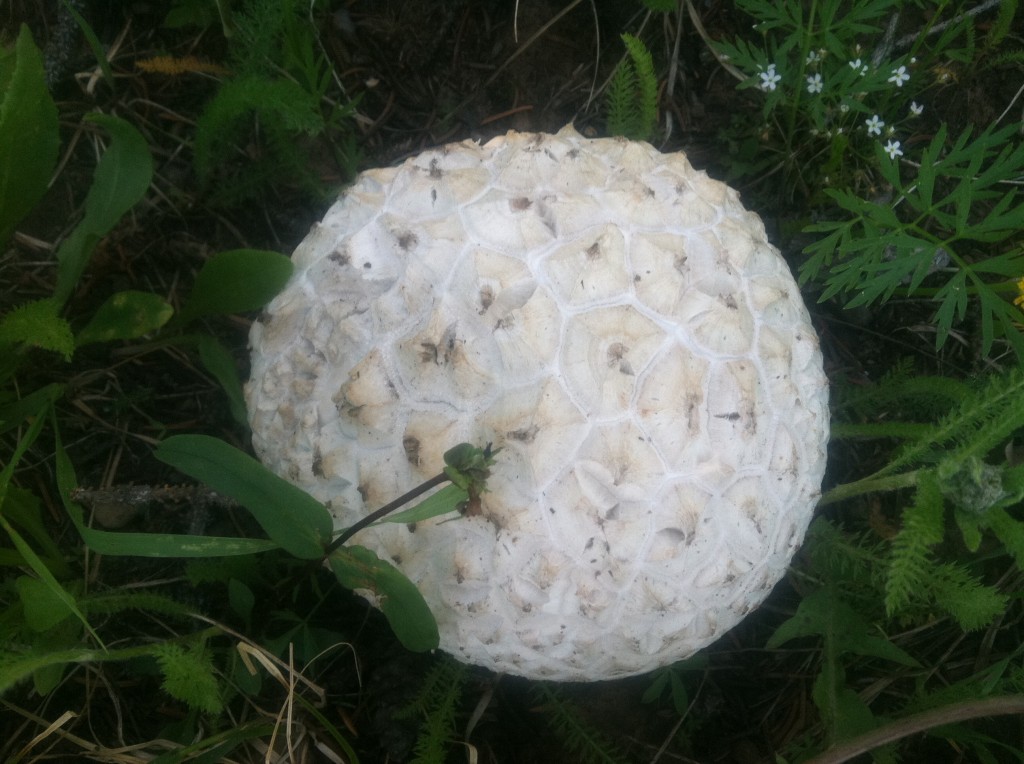 Last year was an incredible mushroom year here in western Colorado. Mushrooms were so plentiful that I found myself practically tripping over them. This year’s mushroom season is in full swing and while it doesn’t look to be quite as stellar as last year, there are still plenty around. Which is a good thing, because I have become completely obsessed with stalking the wild mushroom.
Last year was an incredible mushroom year here in western Colorado. Mushrooms were so plentiful that I found myself practically tripping over them. This year’s mushroom season is in full swing and while it doesn’t look to be quite as stellar as last year, there are still plenty around. Which is a good thing, because I have become completely obsessed with stalking the wild mushroom.
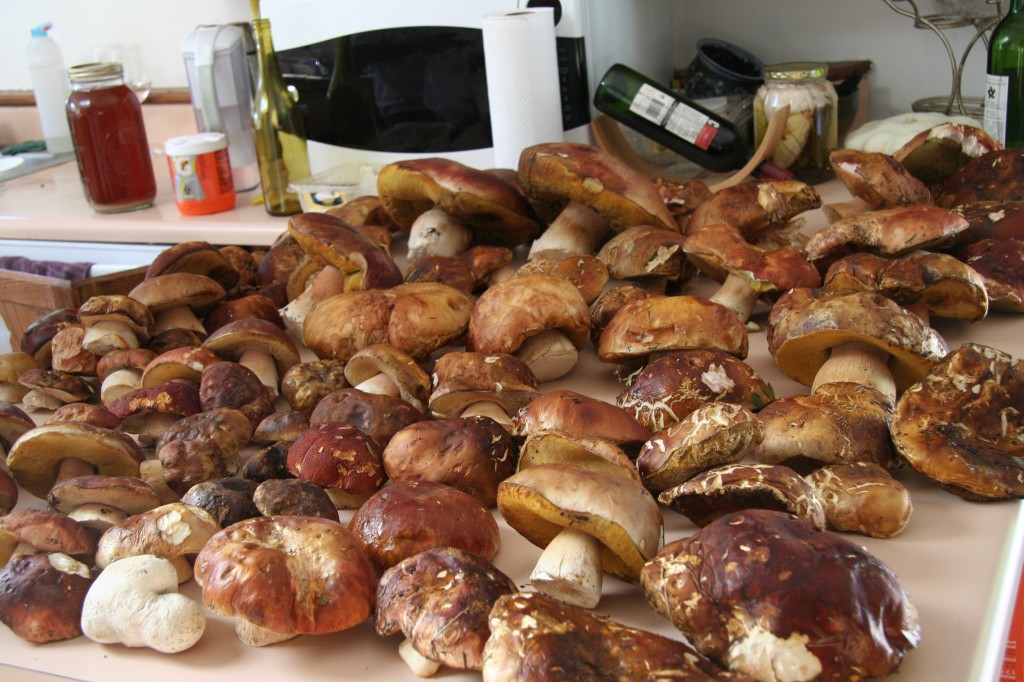 So much so that on a recent trip to New Mexico, I stopped not once, not twice, but three times to collect mushrooms–once stopping the car to collect a mushroom I’d spotted on a hillside next to the road. The problem is that I’d found a couple of aspen boletes on my first stop. I knew there had to be more. Shrooming addiction is a lot like a gambling habit. You just know you’re going to get lucky. And then when you do, you can’t stop. Just one more bolete, you tell yourself.
So much so that on a recent trip to New Mexico, I stopped not once, not twice, but three times to collect mushrooms–once stopping the car to collect a mushroom I’d spotted on a hillside next to the road. The problem is that I’d found a couple of aspen boletes on my first stop. I knew there had to be more. Shrooming addiction is a lot like a gambling habit. You just know you’re going to get lucky. And then when you do, you can’t stop. Just one more bolete, you tell yourself.
Just don’t ask me where I find them. If you do, I’ll give you the mushroomer’s standard reply. “Oh you know, around.”
*Photos by Christie Aschwanden. From top: King boletes (Boletus edulis); aspen boletes (Leccinum insigne) and chanterelles (Cantharellus cibarius) sauteed in butter; a medley of mushrooms, only some of them edible; western giant puffball (Calvatia booniana); my bolete obession revealed.
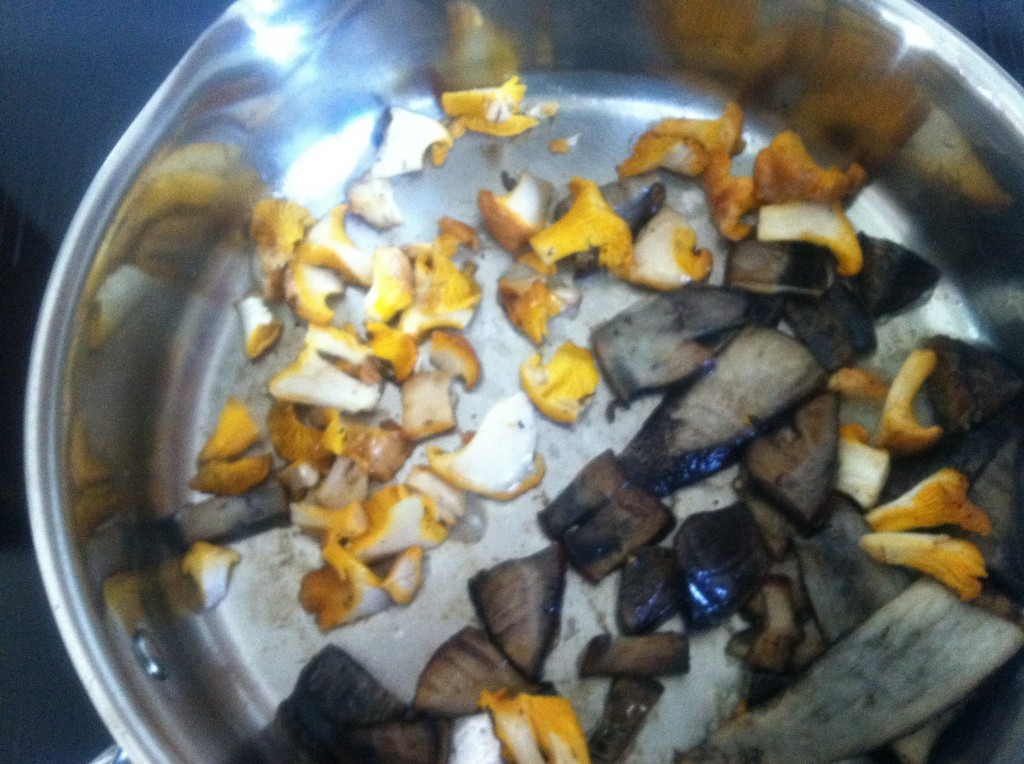
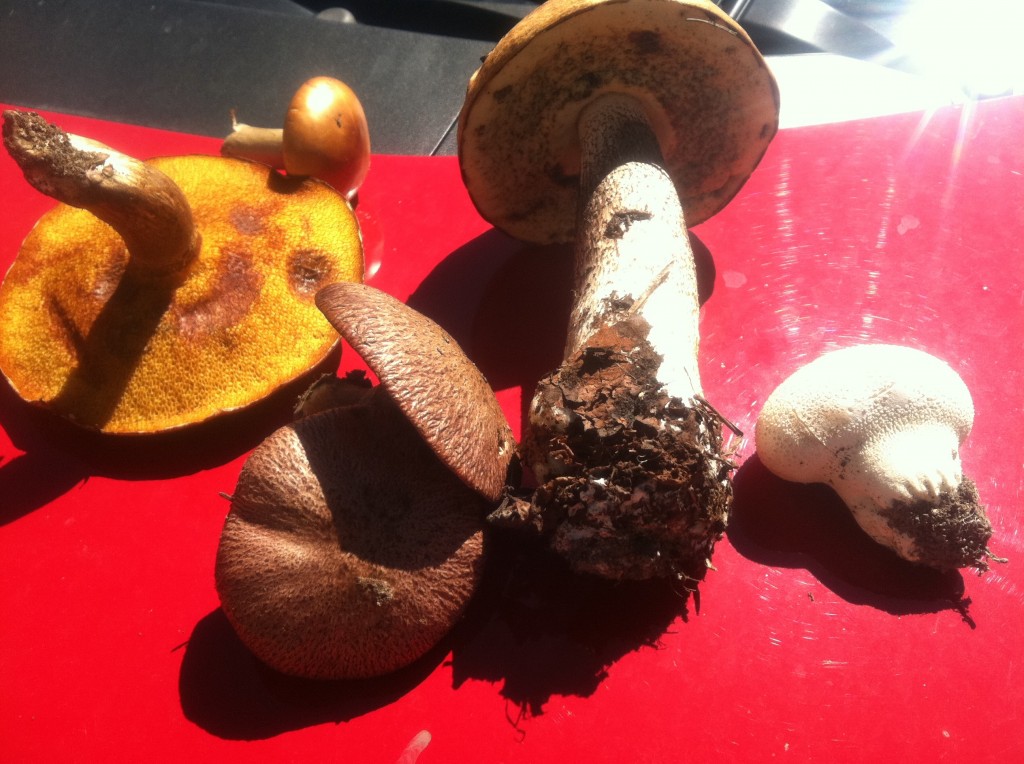
On the High Country News website, Amanda Peacher has a very cool video about mushrooming that includes an explanation of why collecting mushrooms helps spread spores. I was glad to know that my addiction isn’t hurting the shrooms.
http://www.hcn.org/articles/foraging-for-fungi-in-the-pacific-northwest
In the early grades, history was taught by making us learn names and dates. I can’t say i liked history much. Wars, and other exciting stuff might be happening, but they made us memorize Washington’s birthday. They didn’t even mention that when he was born, the Julian calendar was in effect, but by the time the US was a nation, the Gregorian calendar was in effect. It changed the year of his birth, since the Julian calendar started in March.
I can’t say that learning this stuff did me any good. You have to plunge into the details to get at the good stuff. I’m sure it’s true for most of science, though it might be tough for chemistry.